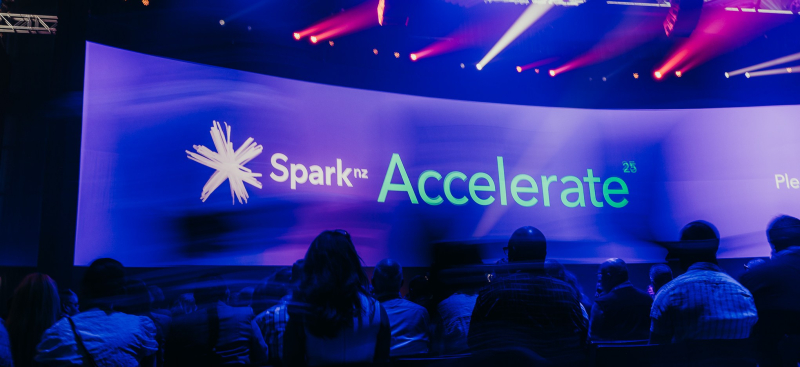UPDATE 5.44PM: That is all for BusinessDesk’s live blog for Spark Accelerate. Thanks for joining us.
UPDATE 5.30PM: How Air NZ’s new robot promises no more mid‑air supply surprises
Air New Zealand won’t forget to load the fizz on future flights thanks to its new AI-driven inventory tools.
An Air New Zealand warehouse and a chain of Canadian furniture stores have adopted Canadian company Cypher Robotics’ autonomous scanning technology to carry out the slow and tedious job of inventory management.
Spark business development manager – IoT (internet of things) Shyam Nathoo said every year Air NZ had closed the warehouse for a full inventory. It was the place it stored everything for aircraft cabins, from lifejackets to soft drinks. The accuracy rate was 85% and often items were written off because they couldn’t be found, or had expired by the time they did turn up.
Canada’s largest furniture chain Leon’s Furniture had managed a 99.6% manual inventory accuracy rate and checked 20% of its stock every day. But that required a highly time-consuming manual process, and it was a task that wasn’t popular with staff.
Both Air NZ and Leon’s Furniture have deployed Cypher’s autonomous mobile robot (AMR) trundling down narrow warehouse aisles and augmented by a tethered drone.
Cypher Robotics founder and CEO Peter King said the robot could check Leon Furniture’s entire inventory in less than an hour instead of taking a working week. At Air NZ it could count 288 bin locations every night within an hour with 100% accuracy.
It should prevent some of the problems of the past.
“Believe it or not they had a plane go out without Coca Cola. It became a big headache…it’s definitely a metric they never want to see happen again. From a customer experience point of view we don’t understand how much inventory these airlines hold and how important it can be to them.”
Communication with Air NZ’s robotic inventory checker is via a Spark private 5G connection. Spark has an agreement to provide 5G connectivity for future Cypher Robotics in NZ.
– Greg Hurrell
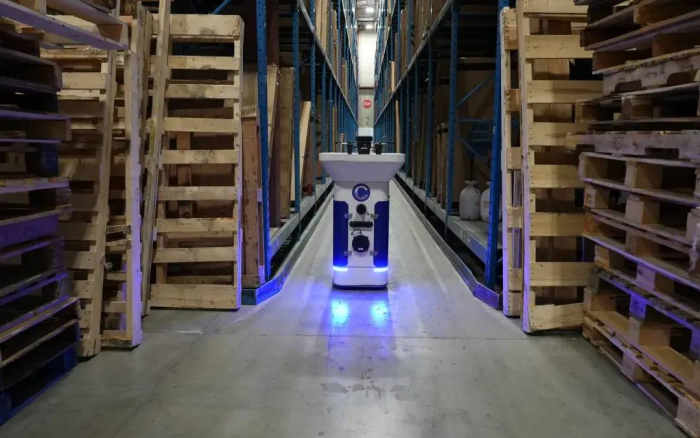 Image: Cypher Robotics
Image: Cypher Robotics
UPDATE 5.22PM: Govt cyber strategy ‘a little bit dated now’, admits top digital chief
The Government’s chief digital officer, Paul James, admits New Zealand’s cybersecurity strategy looks “a little bit dated now”.
He made the comment at the Spark Accelerate conference in response to a question about the strategy.
The questioner pointed out it had been created two election cycles ago – during the first term of Jacinda Ardern’s Labour-led coalition government.
James responded: “It is a little bit dated now. But I’m not sure that strategy is the key thing to do here.”
The strategy was developed in 2019 and was meant to be revised or replaced at the end of 2023.
The Department of the Prime Minister and Cabinet (DPMC) is responsible for developing the strategy and had previously told BusinessDesk a new one would be published by the end of 2024.
However, both Paul James and Andrew Clark, director-general of the Government Communications Security Bureau, told attendees at the Spark Accelerate conference that there were more important things to do around cybersecurity.
James said a cybersecurity strategy was a high-level document and he didn’t think that was the highest priority right now.
“Really, what we actually need is the action plan, the agreed roadmaps.”
Clark said the DPMC was working on the next draft of the cybersecurity strategy, but the absence of one didn’t mean others couldn’t take action.
“We don’t have to wait for the paperwork to catch up; we kind of know what we’ve got to do.”
Australia developed its current cybersecurity strategy in 2023 and has put significant resources into it.
The government in Canberra has set some bold goals for itself in its strategy, including becoming a global leader in cybersecurity by 2030.
James and Clark appeared at the Spark Accelerate conference on a panel alongside former White House chief information officer Theresa Payton.
– Dileepa Fonseka
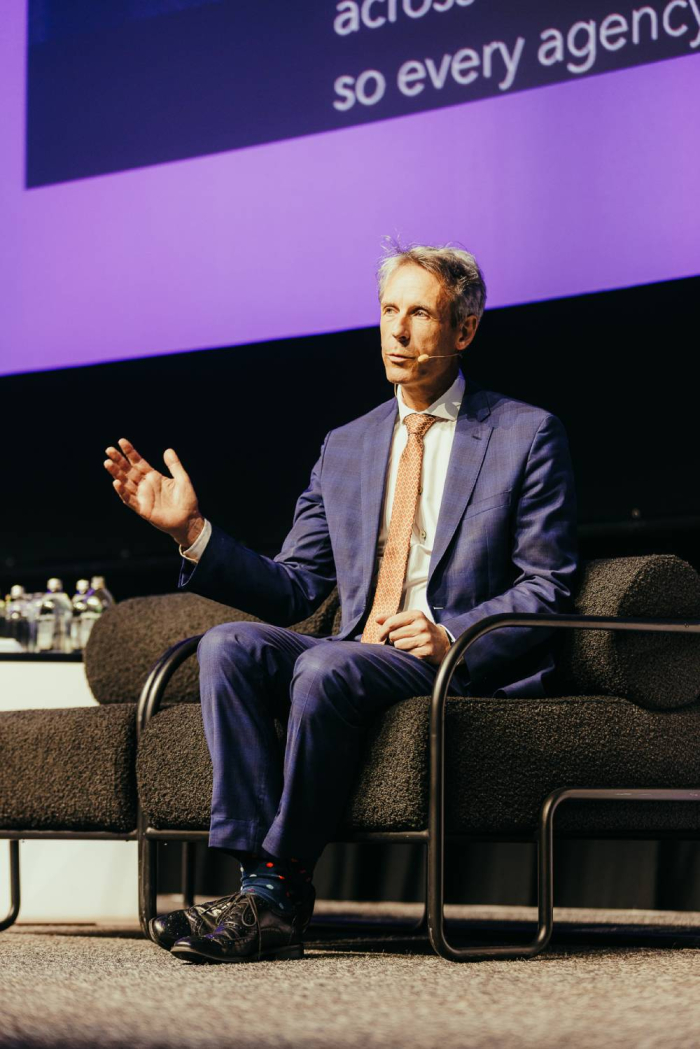 The Government’s chief digital officer, Paul James. Photo / BelowStudios
The Government’s chief digital officer, Paul James. Photo / BelowStudios
UPDATE 4.08PM: AI and hybrid cloud in focus as Spark and Hitachi tackle health sector pressures
At Spark Accelerate’s health breakout session, Spark Health chief executive John Macaskill-Smith and Hitachi Vantara’s global AI lead Jason Hardy described how technology might help relieve the mounting pressure on New Zealand’s healthcare system.
Macaskill-Smith said the explosion of interest in artificial intelligence had created “a lot of hype and a lot of FOMO”, with some organisations rushing to buy tools without a clear strategy. He urged health providers to think more broadly about capability rather than chasing narrow products, noting the cost and privacy challenges that come with large-scale use of public cloud.
Hardy, a former clinical informatics leader in the US, said the health sector globally faces a shortfall of more than 10 million workers by 2030 and rising costs that can’t be solved through hiring alone. He outlined how automation and data-driven systems could ease the load, from faster clinical coding and national imaging networks to real-time resource planning in hospitals.
Both speakers pointed to the potential of a sovereign hybrid-cloud model, where health data stays in New Zealand but organisations still gain the flexibility of cloud computing.
The discussion closed on a call for collaboration across the health ecosystem – public, private and community – to build shared digital capability and make new technology accessible to all providers.
– Cecile Meier
 Hitachi Vantara’s global AI lead Jason Hardy and Spark Health chief executive John Macaskill-Smith.
Hitachi Vantara’s global AI lead Jason Hardy and Spark Health chief executive John Macaskill-Smith.
UPDATE 4.03PM: The agenda for the rest of day one
4pm: Fireside chat: Building Digital Trust in a Post-Truth Era with Theresa Payton – Fortalice Solutions CEO, Paul James – New Zealand Government CDO and Andrew Clark – GCSB Director General.
4:30pm: Moments that matter: Resilience, recovery and the power of connection – panel with Thiagu Anandakrishna – Woolworths Head of Technology, Tony Clifford – Pan Pac Managing Director and Renee Mateparae – Spark Network & Operations Director.
5:00pm: Building supercompanies in the age of AI with Greg Shove – Machine & Partners Founder, Section Business School CEO.
UPDATE 3.57PM: How Spark hopes automation will finally give 5G its purpose
BusinessDesk columnist Peter Griffin once referred to standalone 5G as a technology solution in search of a problem.
Spark will be hoping increased levels of automation in everything from taxis to automobile manufacturing means 5G’s problem-solving moment has arrived.
That was the tack taken by Ericsson Australia NZ President and CEO Ludvig Landgren, who used the automated taxi service Waymo to sell his audience on the dream of 5G at one conference breakout session.
“You step into that car, and you know what the weirdest thing is? The weirdest thing is that after a minute, it does not feel weird at all. It feels wonderful.
“You know, it smells nice in the car, and you can put on whatever music you want. You know, you control the heating in the car. You can be on your teleconference, whatever you want to do.”
Standalone 5G allows “slicing” of the network, meaning providers can split off particular sections of 5G for particular uses.
For example, say you were a stadium operator and you wanted everyone at a rugby game to have better quality of service during a match.
Instead of people inside a stadium sharing priority on a network with people in the area surrounding a stadium, providers with standalone end up getting better service.
More importantly, it allows for providers to offer better quality connectivity for automated services over a wide area, like those aforementioned robotic taxis.
More practical applications in a NZ context might be at something like a port. Spark told BusinessDesk in a pre-conference briefing that it had secured contracts with two ports to use 5G to aid with their automated operations.
In 2023, Spark announced it would invest up to $60 million over three years upgrading its 5G network to standalone.
– Dileepa Fonseka
UPDATE 2.33PM: AI lessons from Spark’s CTO
Spark chief technology officer Matt Bain says the hardest part about implementing AI is organisational change.
Bain – who says Spark’s AI journey started six years ago – made the remarks at a breakout session at the Spark Accelerate conference.
The AI lead said there were three key considerations when adopting AI. The first was reviewing your tech stack, and the second was thinking of data requirements as fuel.
However, the final bit – organisational change – is the hardest.
“It’s the organisation change that needs to take place, in our experience is this is the biggest bit, it is getting people to lean into this and revisit the old ways of working and working.
“Organisations need to think about how to reimagine existing processes,” Bain said, adding changing processes usually requires “a combination of agents doing work together and humans doing work together”.
“If you just provide CoPilot for all of your people, you are unlikely, on paper, to see the benefit.”
– Victoria Young
UPDATE 2.25PM: The summit has moved into breakout room sessions, with each one having a specific focus and different speakers.
Spark makes the case for a resilient NZ network
Spark makes the case for a resilient NZ network
In a breakout on “the resilient network”, Spark’s Karyn Pulley and principal consultant Steven Douglas urged businesses to get the basics right. If your network is fragile, everything you build on top of it – from AI tools to cloud apps – is at risk, they said.
Pulley contrasted the old “castle and moat” set-up, where everything sat safely inside an office network, with how people work now: from homes, branches, airports and mobile devices, connecting to applications scattered across multiple clouds. That model, she said, no longer matches reality or the current threat environment.
Douglas talked about the scale of the risk. “Over 50% of internet traffic these days is a bot, and over 40% of those bots are malicious.” Identity theft and phishing are now the frontline issues, not just exposed servers in a data centre.
Their pitch to the room was SASE (Secure Access Service Edge), a tool bringing connectivity and security together so staff can connect securely from anywhere, to only what they need, without jumping through clunky VPN hoops. Policies are managed centrally, giving IT teams one clear view of who is on the network and what they are accessing.
Douglas said “zero trust architecture is no longer an option. It’s essential”.
He pointed to Cyclone Gabrielle’s impact on Gisborne, where sites were knocked offline, as a reminder that networks must cope with extreme events as well as everyday use.
– Cecile Meier
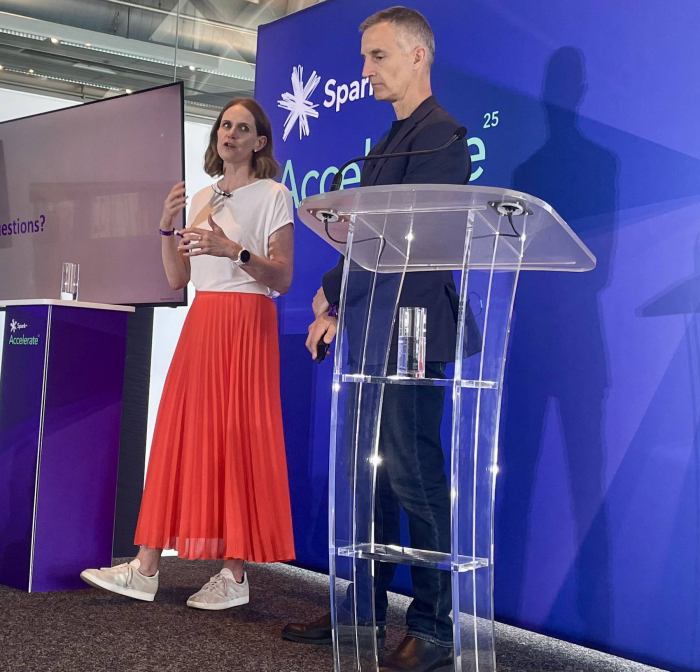 Spark’s Karyn Pulley and principal consultant Steven Douglas.
Spark’s Karyn Pulley and principal consultant Steven Douglas.
UPDATE 1:15PM: Spark tech conference hears push for bold AI investment and cultural shift on failure
As the Spark Accelerate conference zooms past midday, businesses are being encouraged to invest through the downturn and treat AI missteps as the price of progress.
Opening the conference, Spark CEO Jolie Hodson said this was the moment to invest in capability.
“At more difficult economic times, it’s very easy to stand back and say ‘we’ll just cut back a little bit’,” she said, “but this is the time when the power of technology can really come to the fore.”
Hodson put AI at the centre of that push.
“Artificial Intelligence is reshaping every aspect of our business landscape, from customer expectations to how we organise ourselves and New Zealand cannot afford to be left behind.” she said.
“We must be bold, we must be curious, and we must be ready to harness innovation to drive our businesses
On a midday panel measuring NZ’s economic pulse, Deloitte NZ CEO Mike Horne said the key to getting more companies to embrace AI and technology was to change the conversation around failure.
Horne said NZ needed to be a bit more like the US in the way it embraced failure culturally.
“If you look at the US … what they are very hot on is accepting that actually failure is an important part of innovation,” he said, “and I think that we need to actually get a bit more of that into the NZ psyche.”
– Dileepa Fonseka
 Deloitte NZ CEO Mike Horne, Spark CEO Jolie Hodson, Chief ASB Economist Nick Tuffley and MC Nadine Higgins on stage at the Spark Accelerate summit in Auckland.
Deloitte NZ CEO Mike Horne, Spark CEO Jolie Hodson, Chief ASB Economist Nick Tuffley and MC Nadine Higgins on stage at the Spark Accelerate summit in Auckland.
UPDATE 12PM: Spark CEO Jolie Hodson, ASB Chief Economist Nick Tuffley and Deloitte NZ Chief Executive Mike Horne are on stage now for a panel discussion with MC Nadine Higgins on the economic pulse and business outlook for Aotearoa.

UPDATE 11.55AM: Former White House CIO – don’t fear being behind with AI – Theresa Payton says we’re all in it together
Fortalice Solutions chief executive Theresa Payton told Kiwi business executives not to fear being behind at the Spark Accelerate event today.
The former chief information officer of the White House referenced a new McKinsey report that surveyed companies in 105 countries.
“Out of all of the respondents, two-thirds of the companies said that their AI right now is only in pilots. They have not scaled it to be enterprise-wide.
“So if you’re sitting here thinking, gosh, I’m so far behind and I’m the only one, you’re not,” she told the standing room only crowd at Auckland’s Viaduct Events Centre.
Payton said of this survey, 62% of respondents said that they are using AI and testing out AI agents, but only 39% have posted some type of positive return on investment.
Spark’s Lifting Productivity report, released this week, said there was a big opportunity for Kiwi businesses to adopt new technologies.
The survey of 397 New Zealand business leaders conducted in August said 46% of participants have fully or partially integrated cloud infrastructure within their operations, and just 29% are experimenting with AI tools.
Payton was the first female White House CIO and served from 2006 to 2008 during George W. Bush’s second term and spoke to Dileepa Fonseka before the conference.
– Victoria Young
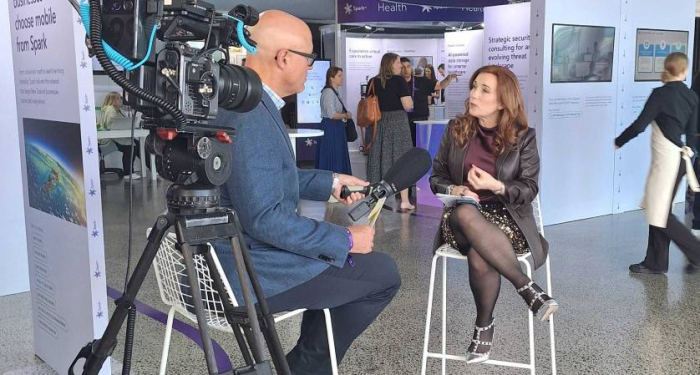
UPDATE 11.29AM: Theresa Payton, Fortalice Solutions CEO, a top global cybersecurity expert and the first female CIO for The White House, is on stage now, giving her keynote speech on leading digital transformation with security at the forefront.

UPDATE 11.25AM: 95% failure rate not a bad thing – Meta AI head urges more experimentation
Meta AI head Clara Shih acknowledges 95% of AI pilots are failing, but she sees that as a good sign rather than a bad one. “I actually think a 95% failure rate for initiatives isn’t a bad thing, because it means that people and organisations are running experiments.
“And when we run experiments, we don’t expect all the experiments to pan out. If all of our experiments are panning out, then we’re not running enough experiments.”
Shih was referring to a Massachusetts Institute of Technology (MIT) study that caused a ripple in US equities earlier this year with its results.
She made the comments as part of her keynote speech at Spark’s Accelerate conference. Her speech largely revolved around what she saw as the seven habits of successful AI initiatives at companies. Those habits included:
Those habits included:
Driving AI transformation from the top-down and the bottom-up.Making AI “everyone’s job”.Balancing short-term wins with long-term bets.Going faster to learn faster.Building for today’s models but expecting future ones to change.Shifting your mindset to one of “abundance”.Getting people to embrace their new role as managers of AI agents.
As part of her comments, she also singled out the Briscoe Group as a company that, in her observation, had adapted well to change over the years.
“Anybody here from Briscoe Group? Good. Or if you’re online, congratulations.
“It’s really inspiring to see how an existing traditional organisation can make the right investments, update strategy and really thrive in the face of disruption.”
– Dileepa Fonseka
UPDATE 10.30AM: Meta Head of Business AI, Clara Shih, takes the stage at Spark Accelerate
UPDATE 10.10AM: On the agenda to start day one
10.30am: The seven habits of highly successful AI enterprises: Clara Shih – Meta Head of Business AI, board director for Starbucks, former Salesforce AI CEO.11.20am: Leading digital transformation with security at the forefront: Theresa Payton – Fortalice Solutions CEO, Top global cybersecurity expert, first female CIO for The White House.12pm: Panel – Inside the economic pulse – Business outlook for Aotearoa, with Spark CEO Jolie Hodson, ASB Chief Economist Nick Tuffley and Deloitte NZ Chief Executive Mike Horne.
UPDATE 10AM: The Spark Accelerate summit is about to begin. We will be providing updates through the day.
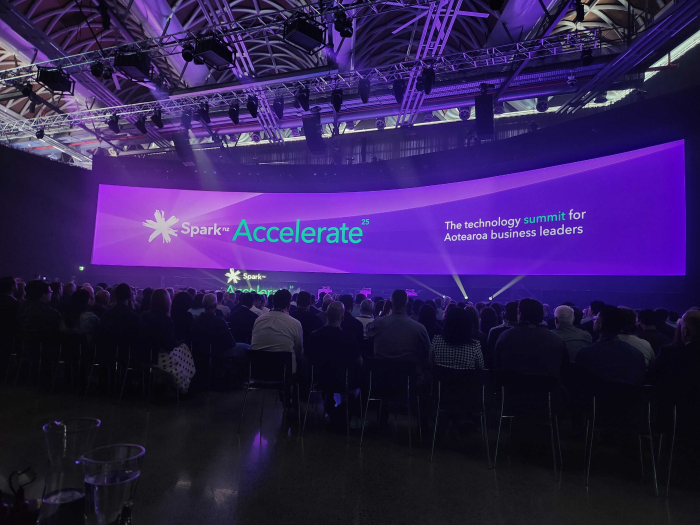
UPDATE 9.45AM: Spark staff revved up before mega-tech conference, Meta AI head Clara Shih set to talk
Auckland’s Viaduct Events Centre is electric this morning as 648 senior company executives flock to the Spark Accelerate summit.
In a pre-event briefing, sales staff manning a raft of exhibits were told to take opportunities to encourage Kiwi businesses to invest in technology.
“Holy moly, how good is this place? This is unbelievably world-class,” more than 30 staff were told before doors opened.
“This is not retrenched, this is not hunkering down. This is how we generate growth,” said one senior executive.
“We’re absolutely backing the trend, so you should be really proud of how your company is turning up into the market to try and stimulate New Zealand businesses to generate growth through technology.”
“Take the opportunity and turn this into growth for the economy and for Spark.”
Displays of technology at the waterfront venue include radio-frequency identification (RFID) technology systems, new health technologies, and autonomous ground robots.
Spark staff are also promoting cloud technologies that respect data sovereignty as part of the conference.
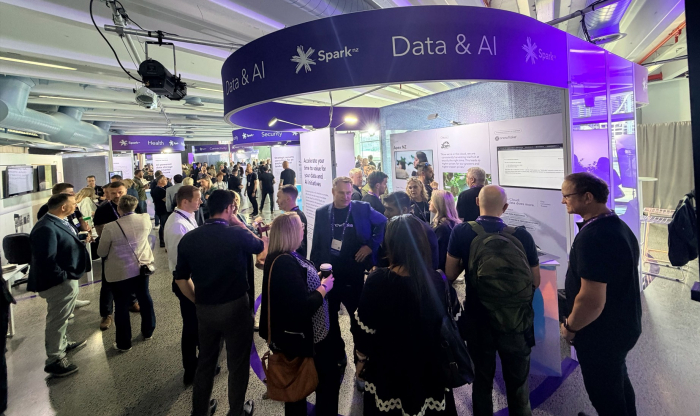
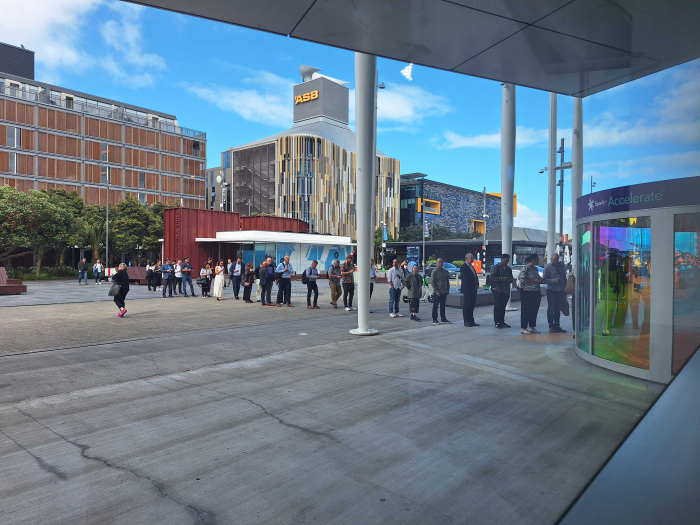
UPDATE 5AM:
BusinessDesk will today bring live coverage from the Spark Accelerate summit held at Auckland’s Viaduct Events Centre.
The technology conference will feature Meta business AI head Clara Shih, technology futurist Amanda Johnstone and the first female chief information officer for the White House – Theresa Payton.
More than 440 senior executives from across the country are expected to attend the two-day event.
BusinessDesk journalists including Dileepa Fonseka, Cecile Meier and Greg Hurrell will be attending and reporting live from the event.
READ MORE:
BusinessDesk is the media partner for Spark Accelerate. Our editorial staff have full control over the story selection, content and publishing.

